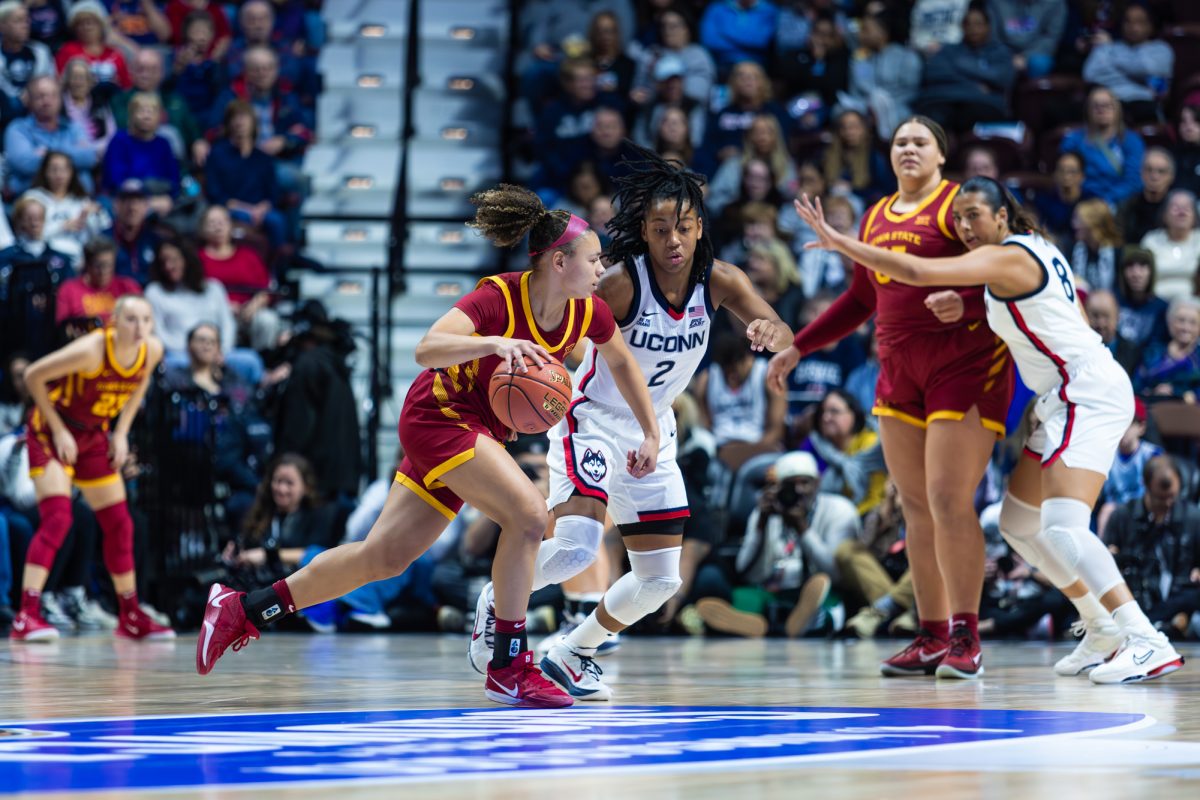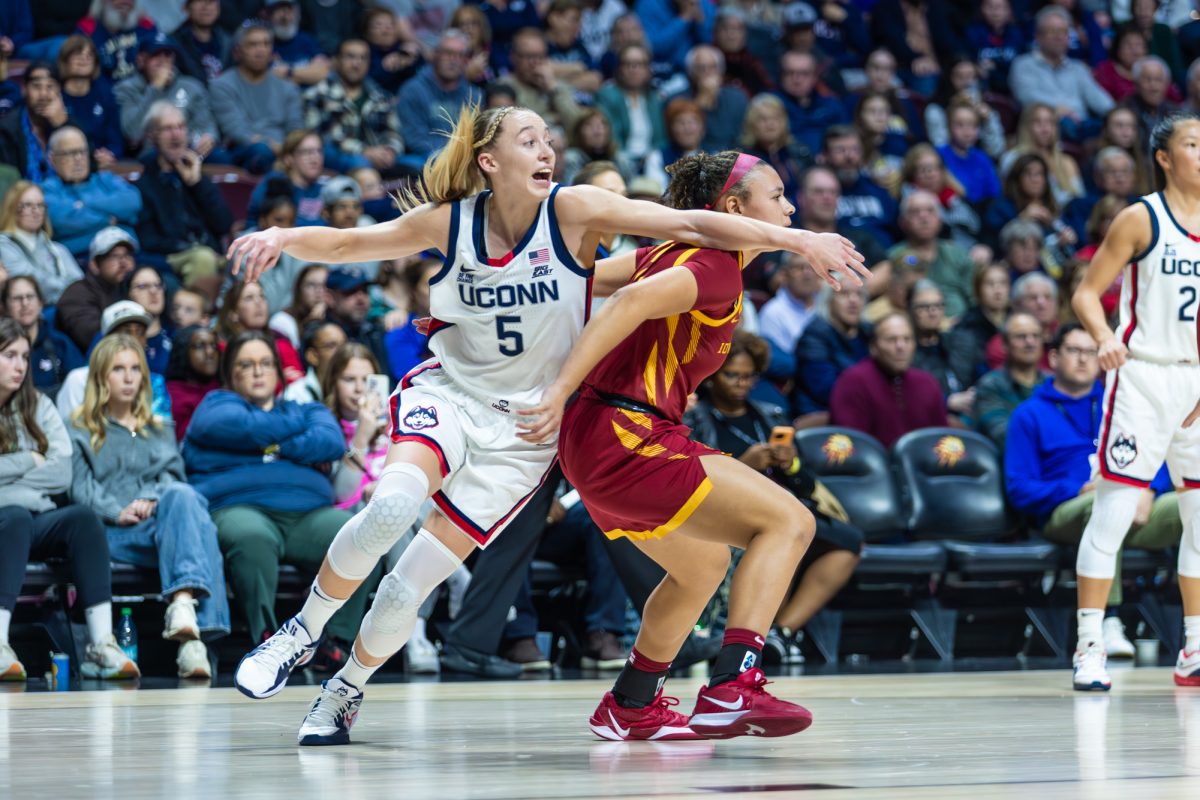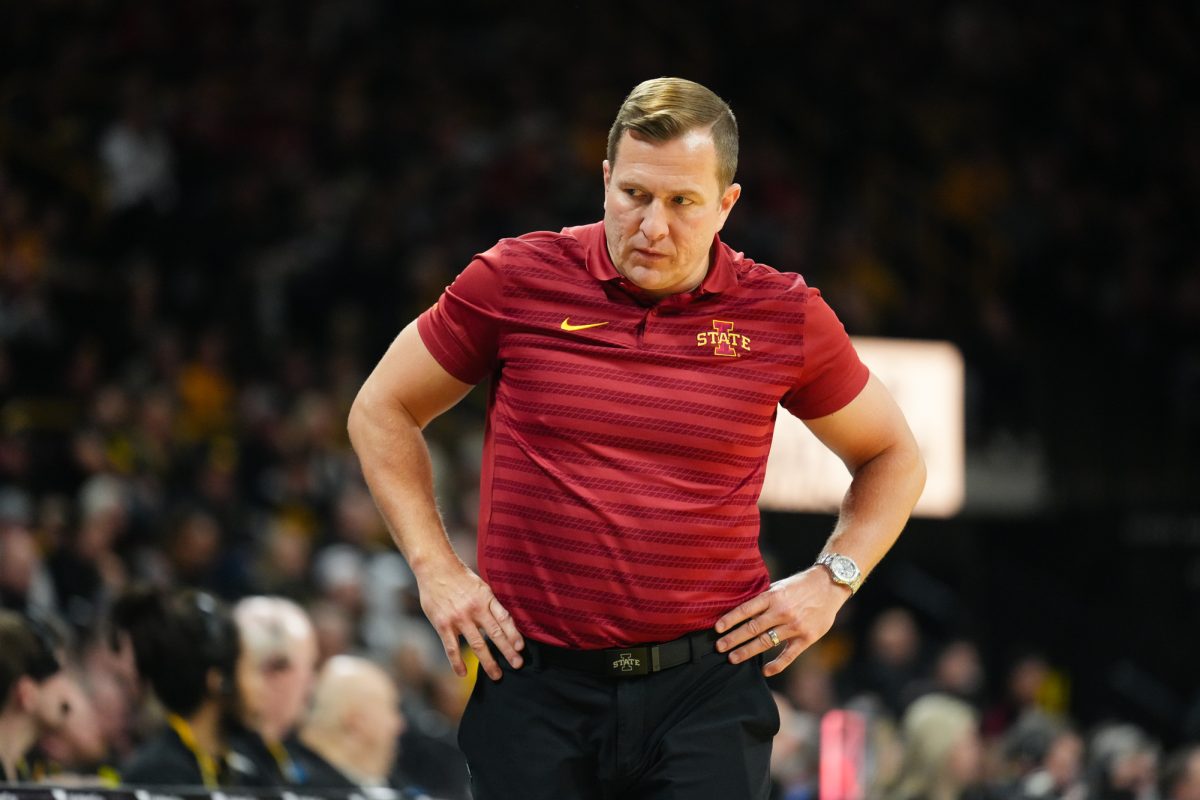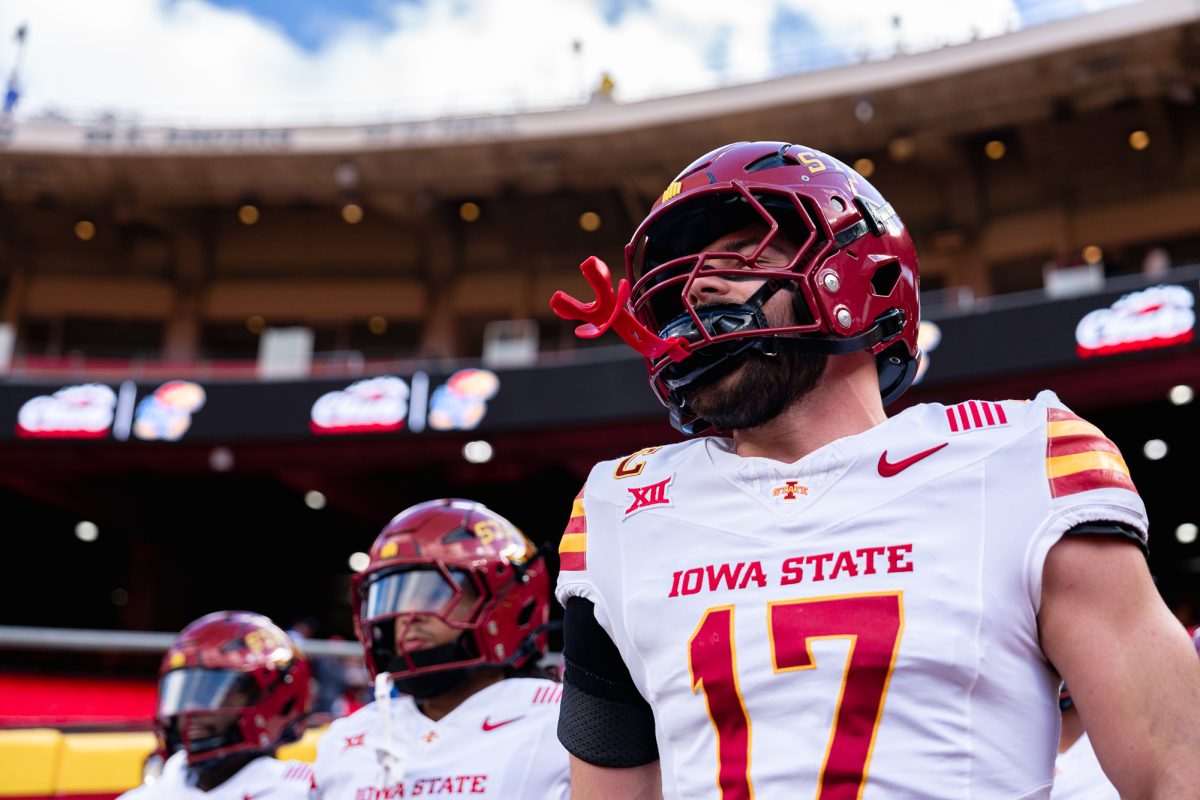A history of violence
April 10, 2008
Though disturbances haven’t occurred during every Veishea, they have become part of the Veishea legend.
According to the riot task force report published on Nov. 30, 2004, every Veishea riot has been “celebratory,” not part of one specific movement or issue.
“Very often, the spark for these incidents is a relatively small group of people,” said Ames Police Chief Chuck Cychosz. “And then what makes it very complicated for us is when a large crowd gathers around that incident or around the small group of people engaged in those actions, and it’s that environment where they can seek cover.”
According to ISU records, the first riot linked to Veishea took place in 1988:
“A bonfire was started in the middle of the street that created a hole several feet deep in the asphalt. Police were unable to control the crowd, and eventually called in basketball coach Johnny Orr and football coach Jim Walden in an effort to calm the crowd and convince them to disperse.”
Pete Englin, director of the Department of Residence, said the 1988 riot started with students on either side of Welch Avenue chanting “tastes great” and “less filling” – the slogan for Miller Lite beer.
“A person, who appeared to be intoxicated, was kind of dancing back and forth across the street blocking traffic, and when the officers went to get him off the road, he dropped to the ground and everybody came off of the sidewalks,” Englin said.
He said the riot began when a few students took the opportunity created by the confusion to vandalize property.
Part of the problem with the 2004 riot, Englin said, was that it caught people off guard.
Steve Schainker, Ames city manager and executive member of the 2004 task force, said some of the feedback the task force received about the incident was that people who hadn’t intended to be part of the riot ended up caught in the situation.
“I think there was a specific problem that happened during the riots,” he said. “There were people in some of the establishments and bars on Welch that didn’t know what was going on, and they were exiting onto Welch.”
He said a bar hotline has been implemented, intended to protect innocent bystanders during an incident such as a riot.
“If there’s ever a disturbance, we call all of the bars in the area to let them know what’s going on, and then they can let patrons out of the back doors of their establishments,” he said.
ISU alumnus Chris Colvin was a graduate student while he was present at the 2004 riot.
“My single biggest memory of the night (I lived on Welch Ave. and had every right to be there) were the highway patrol officers commenting on how dumb the Ames Police were to herd the students into a parking lot with large rocks [in it],” Colvin wrote in an e-mail.
He said a big problem with the incident was that there were pointless beatings and arrests of students who weren’t necessarily involved with the event.
“I wasn’t in the actual crowd – I didn’t cause any damage, but I got threatened with arrest for taking photos several times,” he said. “I was angry at the idiots who were causing the damage, but my faith in the APD has yet to recover,” Colvin wrote.
Ames Police Cmdr. Jim Robinson said there were multiple reports about what officers did or did not do on Hunt Street on the night of the 2004 incident.
“I know there had been accusations that police had moved into the Hunt Street area in riot gear, but that was not the case. I know some officers had protective headgear, but no gear such as shields or riot batons,” Robinson said.
He said one of the things he noticed about the 2004 riot was that the mood of the incident was a lot different than other civil disturbance incidents he’s seen before.
“It wasn’t the same as in years past. During this particular incident, the mood was a lot meaner. For whatever reason, there was quite a bit of aggression that was directed toward law enforcement,” Robinson said.
He said another obstacle was that people did not leave the area during the 2004 incident.
“We had friends calling friends to come into the area, and by having those large numbers of people there, it shields the individuals involved in acts of vandalism,” Robinson said.
Kyle Peterson, Veishea general co-chairman and junior in marketing, said safety and security are the top priorities of the Veishea organizers.
“We, as a student organization, just have a limited capacity to control large numbers of people,” Peterson said.
He said none of the riots have ever been on campus, but the Veishea committee has implement some of the task force’s recommendations.
“One of [them] was to have more late-night entertainment events. So, in the past two years, as well as this year, we’ve done a good job of meeting that requirement,” he said.
He said the Veishea celebration was moved back onto campus, which has been a big help.
“Previous to Veishea 2006, some of the events were held in Campustown and on Welch Ave., and one of the recommendations from the task force was to move them onto campus.,” he said.
There are some misconceptions about what the Veishea committee has done to help discourage a situation where a riot could resolve, he said. One of them was that Veishea had made all of its events dry. He said the committee was actually just following university alcohol policies because all the Veishea events have been moved onto campus.
“We have not changed any alcohol rules from last year to this year. We’re just trying to do a better job of publicizing it and enforcing it,” Peterson said.
Englin said he thought alcohol played a part in prior riots.
“The alcohol impairs judgment. That’s a medical fact. Alcohol is a significant contributing factor,” Englin said.
Englin said that, as the director of the residence halls, he has had to deal with a lot of the judicial proceedings that stemmed from the 2004 riot. After speaking with several students involved in the incident, he is confident they would not have chosen to make the decisions they did if alcohol had not been involved.
“I think we continue collectively – students and staff – to take steps to mitigate the possibility of another disturbance. But there’s not a community that I’m aware of that’s created a magic formula where they can guarantee that it doesn’t happen,” Englin said.
Veishea incident timeline, ccording to the 2004 riot task force report
1985 – An event called “Ash Bash” put on by the greek community ends with cars being burned and flipped over.
1988 – A riot takes place on Sunday morning. The crowd is approximated to be at about 5,000. Other problems occured in the two previous nights and parties were shut down in the campus area. Forty-five people were arrested, including 25 ISU students.
1992 – People in a crowd estimated to be about 8,000 throw various objects at the police. Twenty-seven are arrested, 47 are treated for injuries.
1994 – People in a crowd throw objects at the police. Twenty people are arrested, including 11 ISU students.
1998 – Students in a crowd approximated to be at about 300 are dispersed by police after chanting and attempting to tear down a light pole. The event was said to be a protest against the first “dry Veishea.”
1999 – A planned protest three weeks before the second “dry Veishea” involves vandalism and profanity as the crowd moved from the Towers, to the Knoll, to Jack Trice Stadium.
2004 – A disturbance in Campustown results in the destruction of property. Thirty-seven people are arrested, including 22 ISU students.






